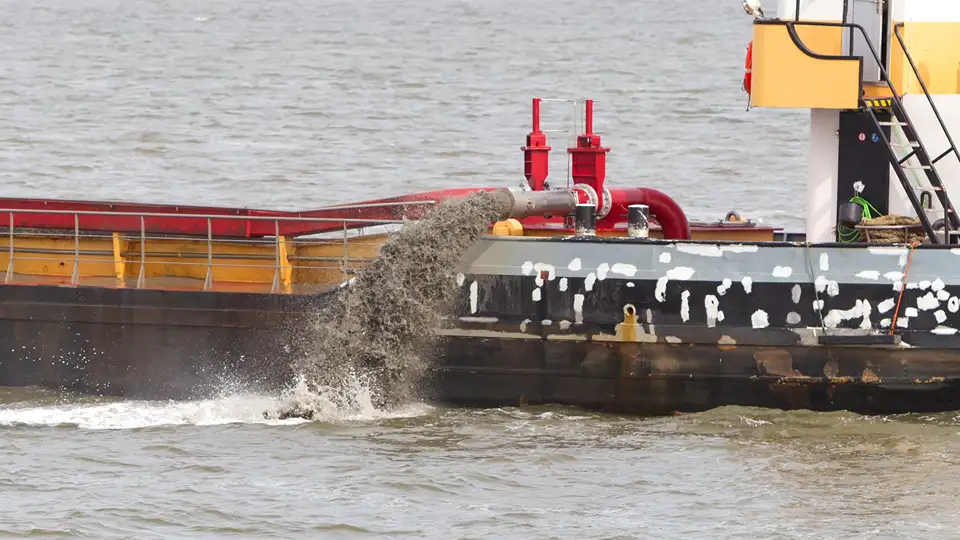Introduction
In the Canadian Northwest Territories, a large-scale Mill Lake clean-up project is underway, marking a significant step toward environmental restoration. The area, once impacted by decades-old mining activity, faces a major challenge: removing contaminated sediments that have accumulated over time. To meet this challenge, Sanexen Environmental Services has deployed the DOP150 dredge pump, a versatile submersible pump from Damen designed to handle sediment removal efficiently while protecting the surrounding environment.
Project Background
The Mill Lake clean-up project aims to rehabilitate an ecosystem heavily affected by mining operations from the mid-20th century. Over the years, metals and other pollutants settled at the lake’s bottom, posing long-term risks to aquatic life and water quality. Sanexen Environmental Services, a specialist in remediation and water management, has taken charge of this crucial operation.
Their approach combines environmental dredging expertise with reliable equipment, and at the heart of it is the DOP150 dredge pump, engineered to safely extract contaminated materials without spreading pollution further.
Technology in Focus: Damen DOP150 Dredge Pump
The DOP150 dredge pump is a compact yet powerful submersible pump capable of dredging up to 5 meters deep. Built for flexibility, it can be mounted on various excavators or cranes, making it ideal for confined or sensitive environments like Mill Lake.
Its modular design allows operators to adapt the suction head and drag head configurations depending on sediment type and site conditions. For the Mill Lake clean-up, this versatility is vital, as it ensures precise removal of fine, contaminated sediments without unnecessary disturbance to the lakebed.
Overcoming Operational Challenges
While dredging depth is within the DOP150 dredge pump’s range, the true challenge at Mill Lake lies in the debris accumulated over the years, branches, roots, and organic material covering the lake floor.
These obstacles risk blocking the suction openings during operation. However, the DOP150’s intelligent design helps mitigate this issue. The drag head grid features a mesh size smaller than the pump’s ball passage, allowing debris to be cleared efficiently without damaging the equipment or halting operations. This engineering advantage ensures continuous progress in the sediment removal process.
Sediment Transport and Containment
Once extracted, the contaminated sediments are transported through a 350-meter discharge pipeline to a Confined Disposal Facility (CDF). There, the slurry is directed into large Geotubes, permeable containers that separate solids from water.
This stage is crucial for ensuring that pollutants do not re-enter the environment. As the Geotubes fill, excess water seeps out and undergoes treatment before being safely released back into the ecosystem. Once the Mill Lake clean-up is complete, the Geotubes will be sealed and covered, permanently containing the contaminants.
Environmental Protection Measures
The project’s success depends not only on efficient dredging but also on comprehensive environmental protection. By pairing the DOP150 dredge pump with controlled sediment containment systems, Sanexen minimizes ecological disruption. The process water treatment ensures that no harmful materials flow back into the lake, while the capping of the Geotubes guarantees long-term safety.
Such measures align with global best practices in environmental dredging, focusing on restoration rather than just removal.
Lessons in Sustainable Dredging
The Mill Lake clean-up demonstrates how modern dredging technology can balance efficiency and environmental responsibility. The DOP150 dredge pump proves that small, adaptable equipment can achieve major ecological restoration goals when used strategically.
This project sets an example for future clean-up efforts across North America and beyond, showing how targeted dredging, proper containment, and sustainable waste management can restore polluted water bodies.
Conclusion
The Mill Lake clean-up highlights a powerful combination of innovation and environmental stewardship. Through the precision and reliability of the DOP150 dredge pump, decades of contamination are being safely removed, giving the lake and its ecosystem a chance to recover.
As more restoration projects adopt efficient technologies, the path to cleaner, healthier waterways becomes clearer, demonstrating that effective environmental dredging can be both technically sound and ecologically sustainable.
